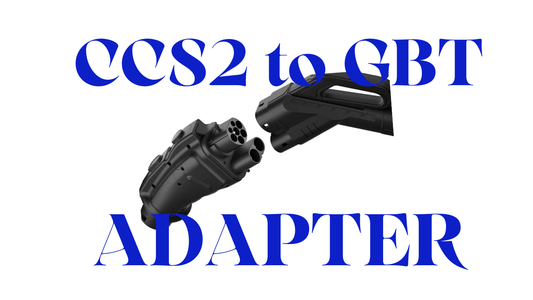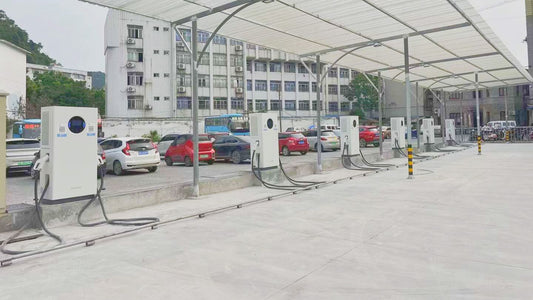You must be very familiar with a phone charger adapter. But how much do you know about an electric vehicle charger adapter. The situation is when you buy an EV in Europe you have to pay much more than buying the same EV in China. These two EVs almost have the same features and manufacture process. The only different thing is the charging port on the car. The one you buy in Europe uses a CCS2 DC charging port and the one in China uses a GBT DC charging port.
What is the key differences between GBT and CCS2 charging?
Regional Usage: GBT is the standard in China, while CCS2 is widely used in Europe and other regions.
Connector Design: GBT uses different connectors for AC and DC charging, whereas CCS2 uses a combined connector for both.
Power Levels: Both standards support high-power DC fast charging, but the exact specifications can vary.
Why do you need a CCS2 to GBT adapter?
As China manufacture the most electric vehicles in the world, many electric vehicles are imported to Europe. But, how to drive a cheaper EV imported from China in Europe? Different types of connectors are used in European countries. To make it happen, you will need a CCS2 to GBT adapter. A CCS2 to GBT adapter is needed for several reasons, primarily to ensure compatibility between electric vehicles (EVs) and charging stations that use different standards:
Compatibility Across Regions
Traveling Across Borders: If an EV owner travels from a region where CCS2 is standard (like Europe) to a region where GBT is standard (like China), their vehicle may not be compatible with local charging infrastructure. An adapter allows them to use local charging stations without issue.
Imported Vehicles: EVs imported from regions using CCS2 to regions using GBT may not have compatible charging ports. An adapter allows these imported vehicles to use the local charging infrastructure.
Infrastructure Accessibility
Expanding Charging Options: Some areas may have more charging stations of one type than another. An adapter allows EV owners to use a wider range of charging stations, increasing convenience and reducing range anxiety.
Legacy Support: As charging standards evolve, an adapter can provide support for older vehicles that may not be compatible with newer charging stations.
Technical Interoperability
Connector Differences: CCS2 and GBT have different physical designs and electrical specifications. An adapter bridges these differences, ensuring that the vehicle and charging station can communicate and transfer power effectively.
Charging Speed: Adapters can help EV owners take advantage of different charging speeds offered by various standards, ensuring they can access the fastest available charging options regardless of the standard used by their vehicle or the charging station.
Practical Scenarios
Fleet Operations: Companies with a mixed fleet of EVs from different regions can use adapters to standardize their charging infrastructure, reducing the need for multiple types of charging stations.
Public Charging Stations: Public charging station operators can provide adapters to cater to a wider range of EVs, attracting more users and increasing station utilization.
In summary, a CCS2 to GBT adapter is essential for ensuring compatibility, expanding charging options, supporting legacy vehicles, and facilitating the practical use of EVs across different regions and standards.
Is it really necessary for you to buy a CCS2 to GBT adapter?
I have done some research on the internet. The cost of a CCS2 to GBT adapter is not cheap, it usually reaches as high as $1200. Which means you need to pay extra $1200 to enjoy the paid DC charging stations. At the same cost, you can buy a 40kw DC charger from Wattsaving. Which means you can enjoy DC charging at your home. You don’t have to wait in the queue to use a public charging station. With a DC charger installed in your garage, you can leave the car charging and go to sleep.
Think about it.




